Sharks and rays have populated the world’s oceans for around 450 million years, but more than a third of the species living today are severely threatened by overfishing and the loss of their habitat. An international research team led by palaeobiologist Manuel A. Staggl from the University of Vienna has now investigated whether and how global warming influences the diversity of sharks based on climate fluctuations between 200 and 66 million years ago. According to the study, higher temperatures and more shallow water areas have a positive effect, while higher CO2 levels have a clearly negative effect. The study was recently published in the scientific journal “Biology”.
Tag: Biology
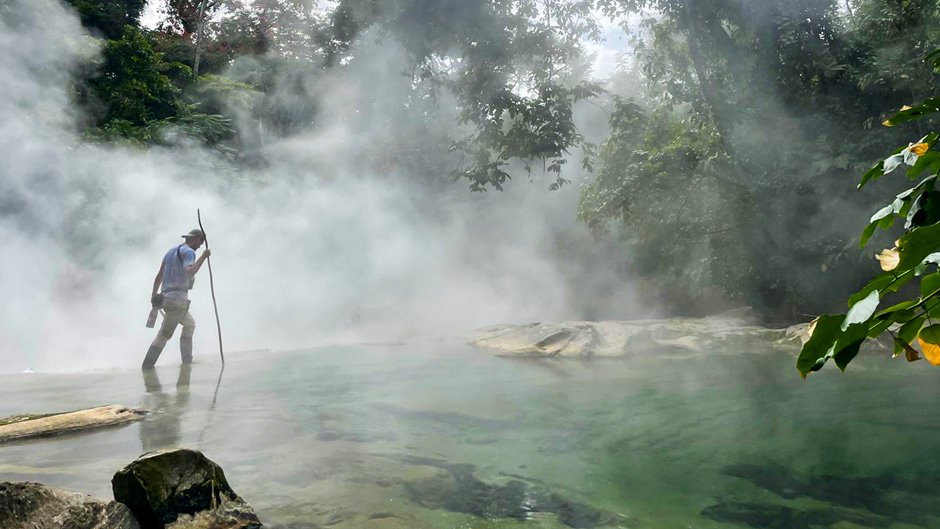
A window into the future of Amazonia
New research from a team of tropical biologists forecasts some of the changes that may occur in the Amazon rainforest as temperatures rise due to climate change.

Across southeastern US, weedy rice steals herbicide resistance from crop rice
WashU scientists found that 57% of 201 samples of weedy rice collected from fields in nine counties or parishes of Missouri, Arkansas and Louisiana in 2022 were resistant to the imidazolinone (IMI) family of herbicides.
Preempting African swine fever in Texas with research
As feral hog populations increase in Texas and the U.S., they create desirable conditions for disease-carrying ticks and increase the risk for an outbreak of African swine fever virus, ASFV.
Could Venetoclax Improve Outcomes of CAR T for Patients with Resistant B-Cell Lymphomas? New Insights at ASH
About a third of patients with diffuse large B cell lymphoma (DLBCL), a fast-growing form of lymphoma, will see their disease advance or recur following treatment. Seeking a new treatment strategy that might boost the effectiveness of existing DLBCL therapies, a team from Roswell Park has been working to understand the underlying mechanisms of the targeted chemotherapy venetoclax. Their findings, to be presented during a talk today at the 66th annual meeting of the American Society of Hematology (ASH) in San Diego, California, provide strong preclinical evidence that adding venetoclax to standard treatment may improve outcomes in patients with treatment-resistant B-cell lymphomas.
Island biodiversity rides on the wings of birds
Bird wing shape — a proxy for long-distance flying ability, or dispersal — is a trait that influences biodiversity patterns on islands around the world, according to research from WashU biologists.
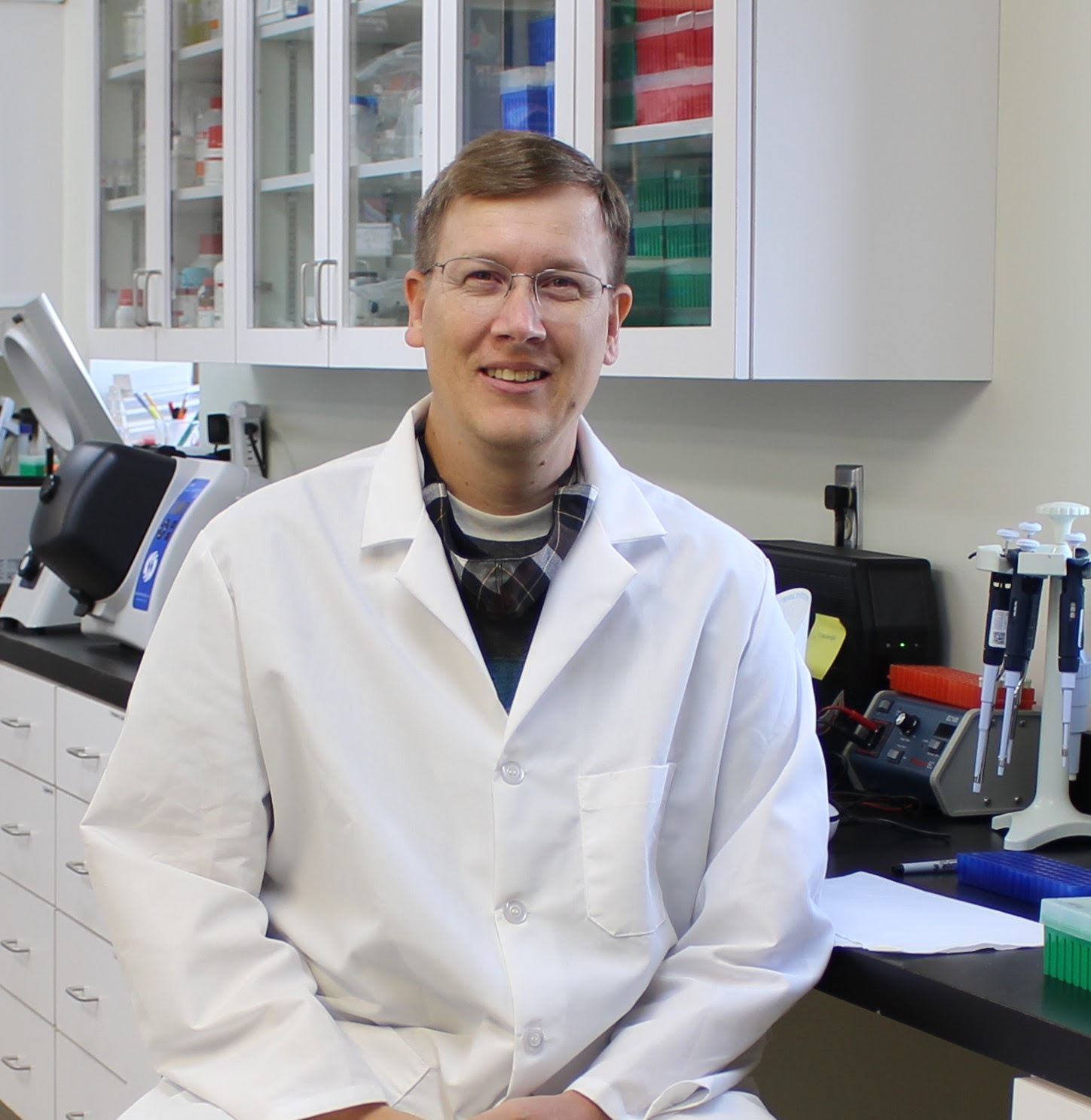
Breakthrough could revolutionize future of tick control
Research collaboration by the Texas A&M Department of Entomology and the U.S. Department of Agriculture, USDA, creates potential for genetic tools to control disease-spreading ticks.

UNC Scientists Discover New Details of Gene Regulation
Genetic researchers at the UNC School of Medicine have identified a key focal point in the biological processes that control cell identity and can lead to disease when mutated.
Advancing Breast Cancer Research: Yale Cancer Center to Share Insights at International Conference
Yale Cancer Center (YCC) researchers at Yale School of Medicine will present new research at the 47th annual San Antonio Breast Cancer Symposium (SABCS) at the Henry B. Gonzalez Convention Center from December 10 to 13.
Binghamton University expands efforts to protect birds from deadly collisions
Glass windows are an invisible killer, resulting in billions of bird deaths in the U.S. each year. To prevent collisions on campus. Binghamton University, State University of New York has installed bird-safe windows.
Weddell seals in the Antarctic strategically time their most extreme dives to maximize foraging
New research from WHOI and partners sheds light on a novel dive foraging strategy.
Encrypted peptides, new class of antibiotics, offer hope in fight against antibiotic resistance
In a significant advance against the growing threat of antibiotic-resistant bacteria, , researchers have identified a novel class of antimicrobial agents known as encrypted peptides, which may expand the immune system’s arsenal of tools to fight infection.
Boosting kiwifruit’s immunity: transcription factors prove crucial in disease resistance
Researchers have made a key discovery in agricultural science, identifying transcription factors AcREM14 and AcC3H1 that significantly boost kiwifruit’s resistance to Pseudomonas syringae pv. actinidiae, the bacterium behind the devastating bacterial canker.
Protein shakeup: Researchers uncover new function of a protein that may unlock age-related illnesses
McMaster University researchers have discovered a previously unknown cell-protecting function of a protein, which could open new avenues for treating age-related diseases and lead to healthier aging overall.
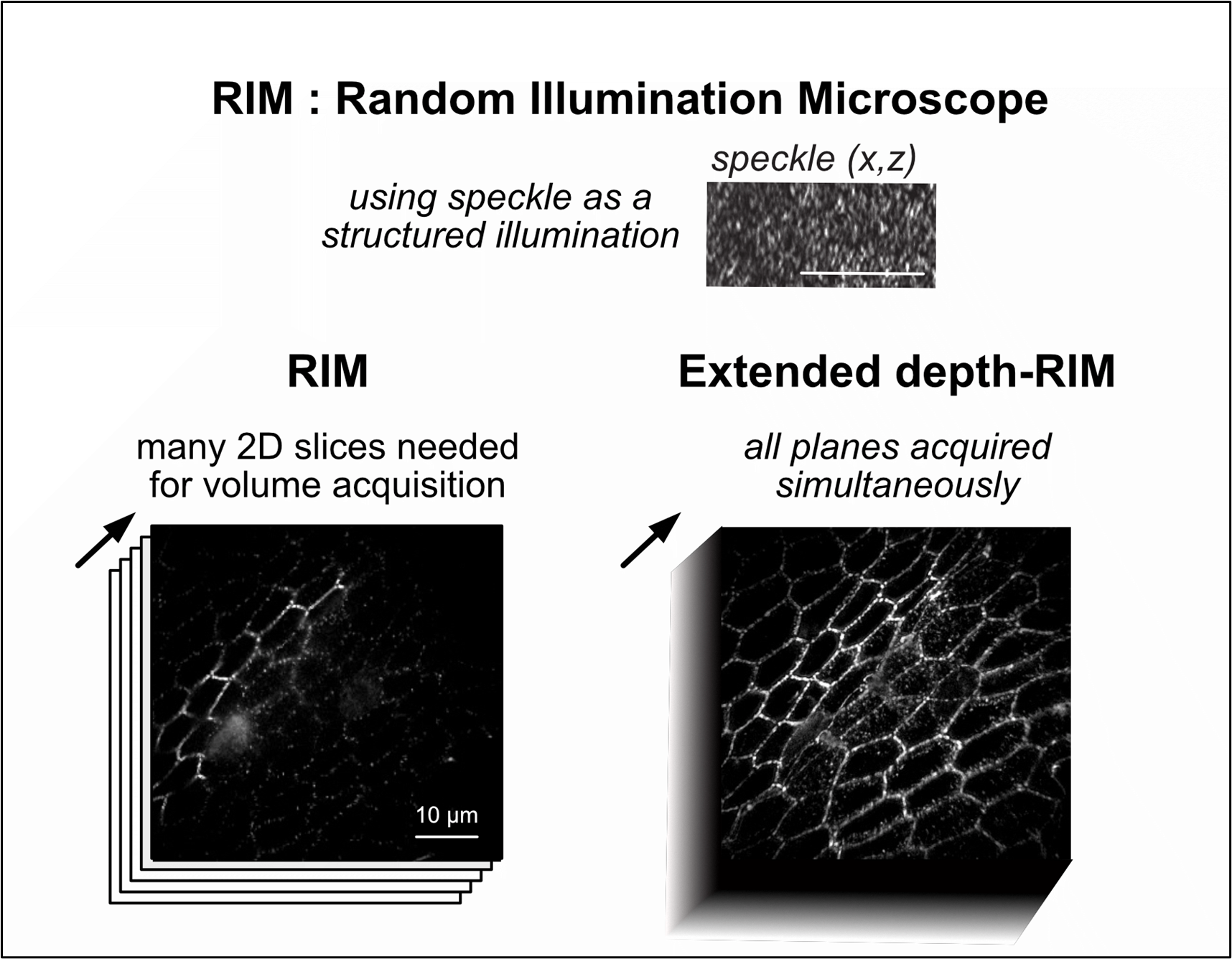
Fast super-resolved microscopy with a structured illumination and extended depth detection.
Researchers at Institut Fresnel have developed an Extended Depth-of-Field Random Illumination Microscope (EDF-RIM) that integrates 3D speckle illumination for super-resolved imaging and extended depth detection for faster acquisition of thick samples. EDF-RIM captures entire 3D volumes in a single projection, reducing acquisition time and light exposure.
ACS president comments on award of 2024 Nobel Prize in Chemistry
On behalf of the American Chemical Society (ACS), President Mary K. Carroll congratulates today’s winners of the Nobel Prize in Chemistry: David Baker, of the University of Washington; Demis Hassabis, of Google DeepMind; and John M. Jumper, of Google DeepMind.
Impact of pollutants on pollinators, and how neural circuits adapt to temperature changes
The Kavli Foundation and the U.S. National Science Foundation are collaborating to accelerate research in the emerging field of neurobiology in changing ecosystems. Awardees of the first Kavli-NSF grants will study the impact of atmospheric pollutants on the sense of smell in pollinators, and how neural circuits adapt to changes in temperature.
UTEP Study: Zooplankton Go “Eew!” to Cleaning Faeces Contaminated Water
Sheds light on limitations of naturally occurring zooplankton for inactivating pathogen contaminated water
Do Coyotes Have Puppy Dog Eyes? New Study Reveals Wild Canines Share Dog’s Famous Expression
New research from Baylor University reveals that coyotes, like domestic dogs, have the ability to produce the famous “puppy dog eyes” expression. The study – “Coyotes can do ‘puppy dog eyes’ too: Comparing interspecific variation in Canis facial expression muscles,” published in the Royal Society Open Science – challenges the hypothesis that this facial feature evolved exclusively in dogs as a result of domestication.
A new era of research comes into focus
As the upgrade of the Advanced Photon Source nears completion at Argonne National Laboratory, scientists anticipate the experimental possibilities.
Outstanding Graduate Students selected for Department of Energy Office of Science Research Program
A total of 62 PhD students from 24 states have been selected for the prestigious Department of Energy (DOE) Office of Science Graduate Student Research (SCGSR) program.
Expert Available: Flying, Venomous Spider Spotted in New England
The parachuting, venomous Joro spider was apparently spotted in a Boston, Massachusetts neighborhood, a reported sighting that may confirm these spiders appear to be moving north. …
‘Scuba-diving’ lizards use bubble to breathe underwater and avoid predators
A species of semi-aquatic lizard produces a special bubble over its nostrils to breathe underwater and avoid predators, according to new research from Binghamton University, State University of New York.
Landmark Study Reveals How Antibiotics Contribute to Inflammatory Bowel Disease Risk
In a landmark study published today in Science Advances, Dr. Shai Bel and his research team at the Azrieli Faculty of Medicine of Bar-Ilan University have uncovered crucial insights into how antibiotic use increases the risk of inflammatory bowel disease (IBD).
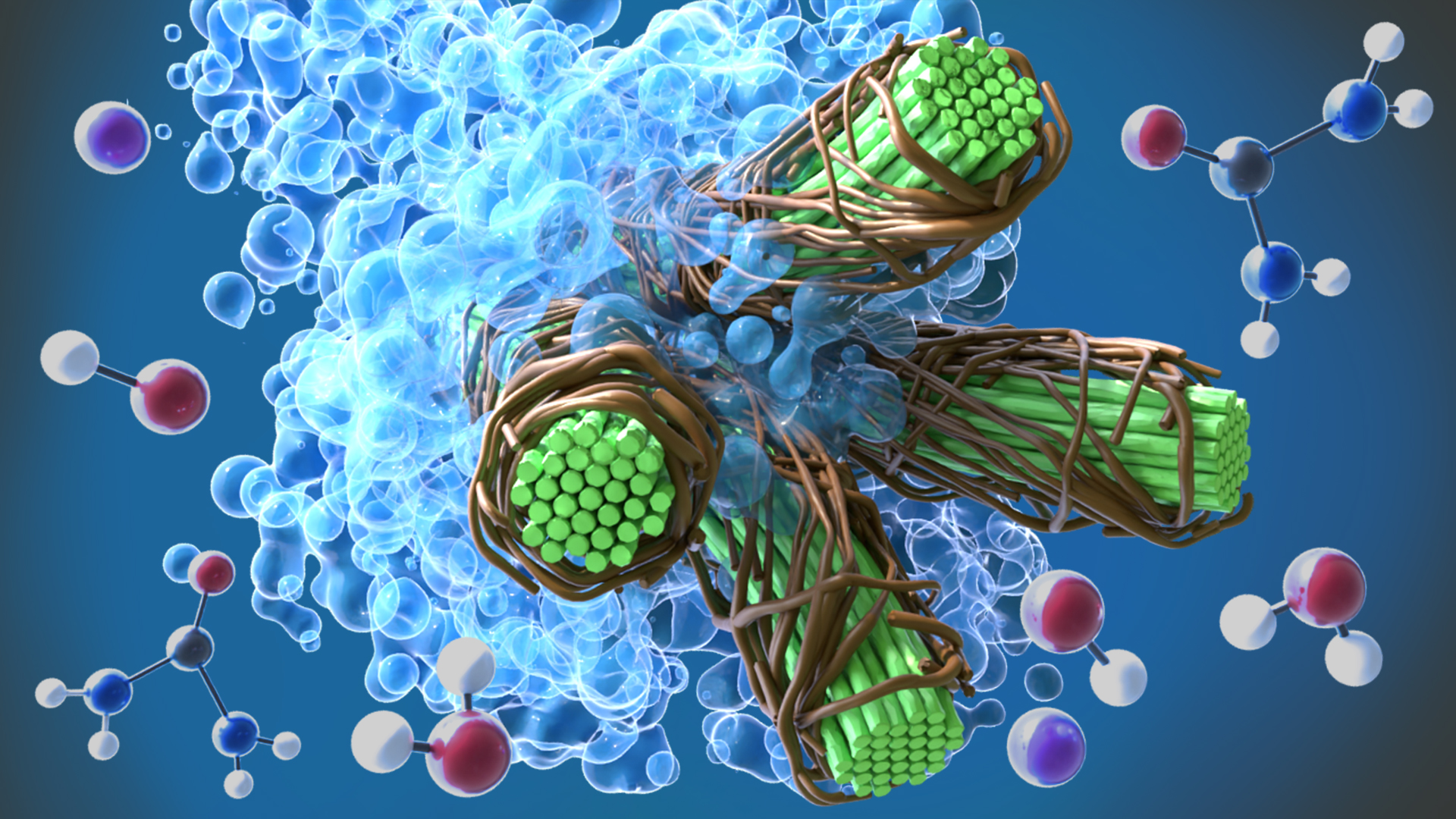
Molecular simulations, supercomputing lead to energy-saving biomaterials breakthrough
A team led by scientists at ORNL identified and demonstrated a method to process a plant-based material called nanocellulose that reduced energy needs by a whopping 21%, using simulations on the lab’s supercomputers and follow-on analysis.
The world’s fastest single-shot 2D imaging technique films ultrafast dynamics in flames
Candle flames, cars, and airplanes emit harmful gases and particles, which are formed through highly complex processes involving extremely fast reactions and often transient flow conditions. To better understand these processes, scientists from the USA and Europe developed the fastest 2D planar imaging system.
$1.8M NIH Grant to FAU Engineering Fuels Quest to Decode Human Evolution
FAU has received a five-year NIH grant to further research on designing and applying statistical methods to identify regions of the genome affected by natural selection, which is an important evolutionary force that enables humans to adapt to new environments and fight disease-causing pathogens.
Unlocking nature’s secrets: neutrons illuminate environmental and biological mysteries”
Neutron techniques are revolutionizing environmental and biological sciences, offering new ways to study complex systems like soil-root interactions and plant-microbe dynamics. Recent advancements in neutron imaging and scattering provide unprecedented insights, helping to address critical global challenges such as climate change and sustainable agriculture.
Why do plants wiggle? New study provides answers
Decades after his voyage on the HMS Beagle, Charles Darwin became fascinated by why plants move as they grow—spinning and twisting into corkscrews. Now, more than 150 years later, a new study may have solved the riddle.
Groundbreaking Study Solves Mystery of Multicellularity
A team of researchers from multiple institutions including the University of Chicago and VectorBuilder, has made a significant breakthrough in the understanding of lineage restriction, a biological phenomenon foundational to multicellular lifeforms as it secures the functional identities of the myriad cell types in the body.
Dual action antibiotic could make bacterial resistance nearly impossible
New drug that disrupts two cellular targets would make it much harder for bacteria to evolve resistance
Insight into one of life’s earliest ancestors revealed in new study
An international team of researchers led by the University of Bristol has shed light on Earth’s earliest ecosystem, showing that within a few hundred million years of planetary formation, life on Earth was already flourishing.
Revising biomedical research reviews
In biomedical research involving human subjects, research ethics committees around the world have traditionally emphasized individual rights and protections for participants, including informed consent.
SHRO’s Giordano Climbs the Ranks of Top Scientists List
Sbarro Health Research Organization (SHRO) Founder and Director, the Italian American Antonio Giordano, MD, PhD, climbs in the rankings of the top scientists in the United States and around the world. This recognition puts Giordano in the company of accomplished researchers in science and medicine globally. A source of pride for Italy but also for the States.
Biotech entrepreneur donates $50 million to UC Irvine School of Biological Sciences
The University of California, Irvine has received a $50 million donation from Orange County biotech entrepreneur Charlie Dunlop for the School of Biological Sciences. Dean Frank LaFerla announced the gift before thousands of graduating students, faculty and family supporters at today’s school commencement, where Dunlop was the featured speaker.
Why some plant diseases thrive in urban environments
Something about city life seems to suit powdery mildew, a fungal disease that afflicts many plants, including leaves of garden vegetables and roadside weeds. A new study from biologists at Washington University in St. Louis finds that plants in the city of St. Louis had significantly more mildew than those in the suburbs or countryside.
Gene could unlock big wheat yields for a growing population
A study from the University of Adelaide has discovered molecular pathways regulated by a gene traditionally used to control wheat-flowering behaviour could be altered to achieve greater yields.
Researchers Identify Priority Areas That Deliver on Climate Change, Biodiversity and Health
To meet the imperative of the Kunming-Montreal Global Biodiversity Framework target, which seeks to protect at least 30 percent of the planet by 2030, researchers in an essay in PLOS Biology argue that “conservation areas need to be large enough to encompass functioning ecosystems and their associated biodiversity, and located in areas of high ecological integrity.”

Brookhaven Lab Biophysicist F. William Studier Awarded Merkin Prize in Biomedical Technology
F. William Studier, a senior biophysicist emeritus at the U.S. Department of Energy’s ‘Brookhaven National Laboratory, has won the 2024 Richard N. Merkin Prize in Biomedical Technology for his development in the 1980s of an efficient, scalable method of producing RNA and proteins in the laboratory.
Nature’s 3D printer: bristle worms form bristles piece by piece
A new interdisciplinary study led by molecular biologist Florian Raible from the Max Perutz Labs at the University of Vienna provides exciting insights into the bristles of the marine annelid worm Platynereis dumerilii. Specialized cells, so-called chaetoblasts, control the formation of the bristles. Their mode of operation is astonishingly similar to that of a technical 3D printer. The project is a collaboration with researchers from the University of Helsinki, Vienna University of Technology and Masaryk University in Brno.
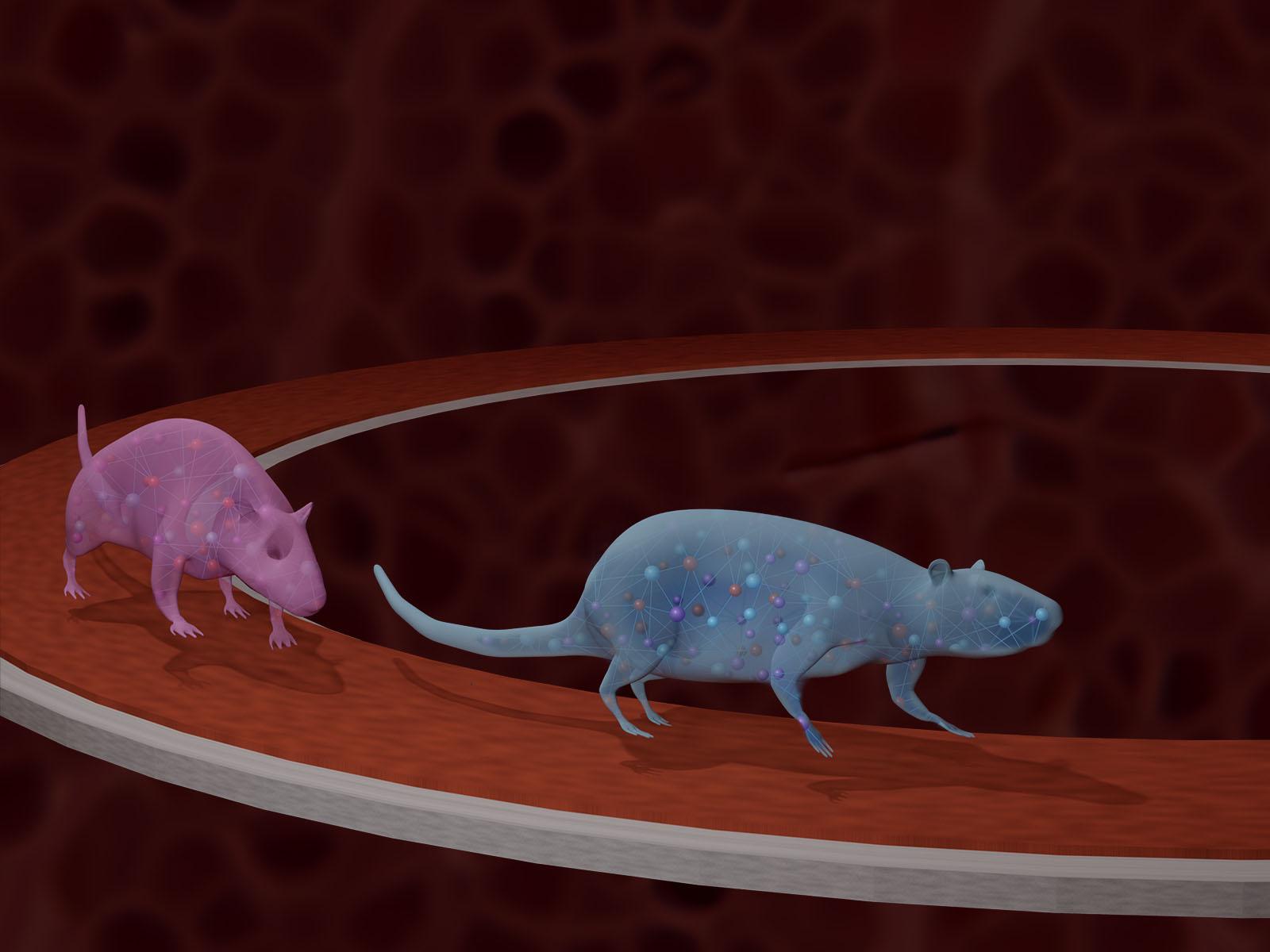
First Steps Toward a Whole-Body Map of Molecular Responses to Exercise
PNNL contributes to a nationwide research consortium investigating the molecular mechanisms triggered by endurance training.
Cell Biology: Molecular Code Stimulates Pioneer Cells to Build Blood Vessels in the Body
Cardiovascular diseases, including stroke and myocardial infarction, are the world’s leading causes of mortality, accounting for over 18 million deaths a year. A team of KIT researchers has now identified a new cell type in blood vessels responsible for vascular growth.
The role of machine learning and computer vision in Imageomics
A new field promises to usher in a new era of using machine learning and computer vision to tackle small and large-scale questions about the biology of organisms around the globe.
Scientists CT scanned thousands of natural history specimens, which you can access for free
3D reconstructions of thousands specimens are now available online.
Binghamton University biologist named Fellow of American Academy of Microbiology
Binghamton University, State University of New York researcher Karin Sauer is among 65 scientists elected as Fellows of the American Academy of Microbiology this year. Fellows are elected by their peers based on their scientific achievements and original contributions to the field of microbiology.
Weedy rice gets competitive boost from its wild neighbors
Weedy rice is an agricultural pest with a global economic impact. It is an aggressive weed that outcompetes cultivated rice and causes billions of dollars in yield losses worldwide. A study from Washington University in St. Louis offers new insights into genetic changes that give weedy rice its edge over cultivated rice in tropical regions of the world.
Membrane Technology: Looking Deep into Smallest Pores
Membranes of vertically aligned carbon nanotubes (VaCNT) can be used to clean or desalinate water at high flow rate and low pressure. Recently, researchers of Karlsruhe Institute of Technology (KIT) and partners carried out steroid hormone adsorption experiments to study the interplay of forces in the small pores. They found that VaCNT of specific pore geometry and pore surface structure are suited for use as highly selective membranes. The researchers report in Nature Communications. (DOI: 10.1038/s41467-024-44883-2)
Pollinator’s death trap turns into nursery
In a group of plants that is famous for luring its pollinators into a death trap, one species offers its flowers as a nursery in exchange.
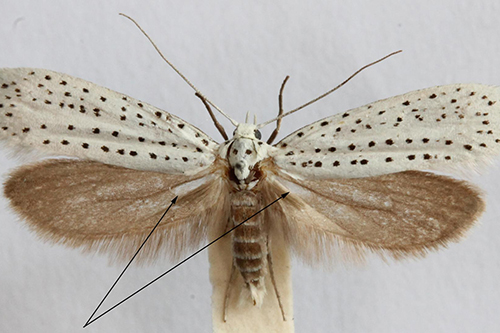
Mystery of moths’ warning sound production explained in new study
The workings of the ultrasonic warning sounds produced by the wings of a species of moth have been revealed by researchers at the University of Bristol.
RNA Scientist Receives Federal Funding to Commercialize Molecular Tool Against Alzheimer’s Disease
University at Albany scientist Scott Tenenbaum, founder of UAlbany spinoff company sxRNA Technologies, Inc. (sxRNA Tech), has received $500,000 from the National Institute on Aging, part of the National Institutes of Health, to study how aging brain cells shape the progression of Alzheimer’s disease, and advance RNA technology that could inform new therapeutics to prevent and treat Alzheimer’s and related dementias.